The NVIDIA GeForce GTX 1650 Review, Feat. Zotac: Fighting Brute Force With Power Efficiency
by Ryan Smith & Nate Oh on May 3, 2019 10:15 AM ESTCompute & Synthetics
Shifting gears, we'll look at the compute and synthetic aspects of the GTX 1650. As we've seen the GTX 1660 Ti and GTX 1660 already, we aren't expecting anything too surprising here.
Beginning with CompuBench 2.0, the latest iteration of Kishonti's GPU compute benchmark suite offers a wide array of different practical compute workloads, and we’ve decided to focus on level set segmentation, optical flow modeling, and N-Body physics simulations.
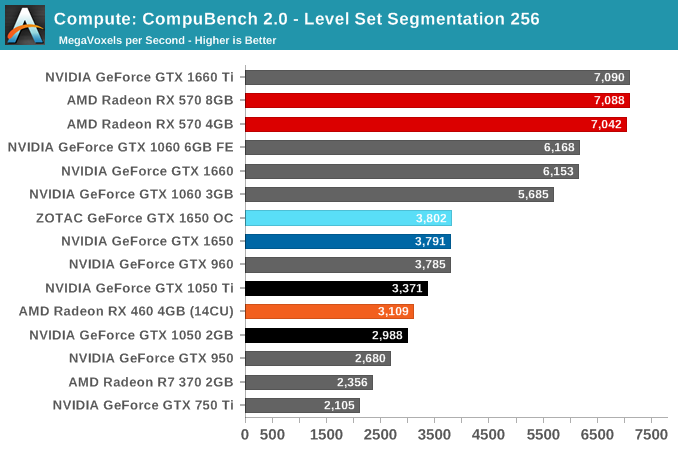
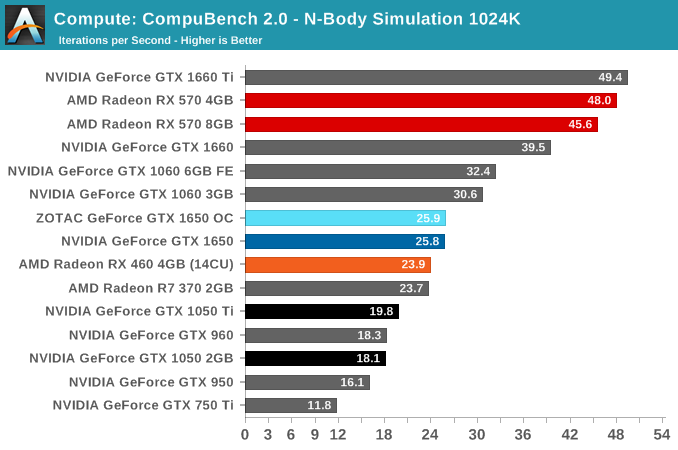
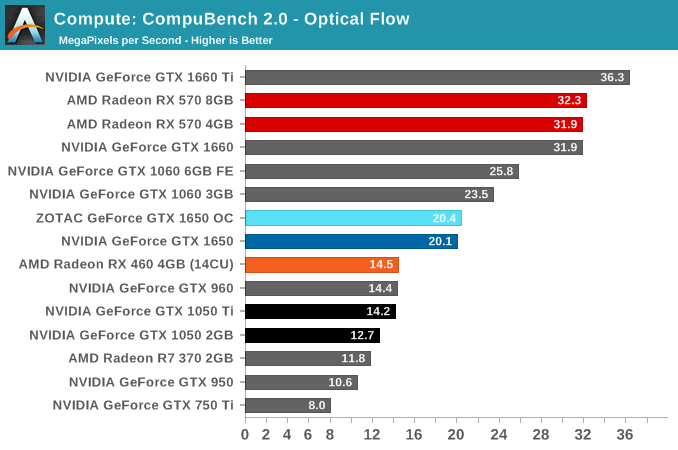
Moving on, we'll also look at single precision floating point performance with FAHBench, the official Folding @ Home benchmark. Folding @ Home is the popular Stanford-backed research and distributed computing initiative that has work distributed to millions of volunteer computers over the internet, each of which is responsible for a tiny slice of a protein folding simulation. FAHBench can test both single precision and double precision floating point performance, with single precision being the most useful metric for most consumer cards due to their low double precision performance.

Next is Geekbench 4's GPU compute suite. A multi-faceted test suite, Geekbench 4 runs seven different GPU sub-tests, ranging from face detection to FFTs, and then averages out their scores via their geometric mean. As a result Geekbench 4 isn't testing any one workload, but rather is an average of many different basic workloads.
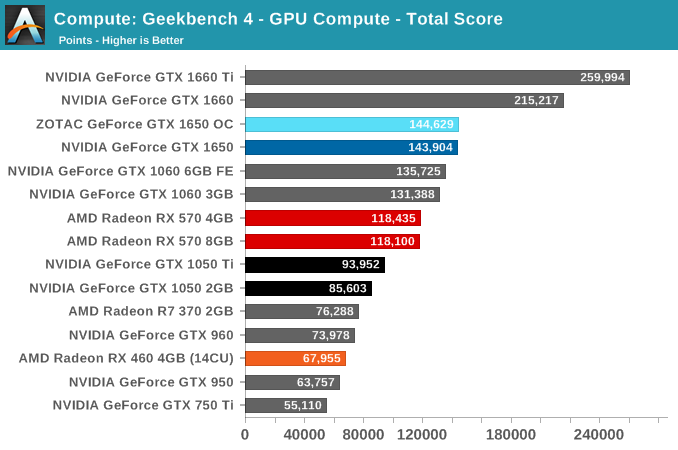
In lieu of Blender, which has yet to officially release a stable version with CUDA 10 support, we have the LuxRender-based LuxMark (OpenCL) and V-Ray (OpenCL and CUDA).
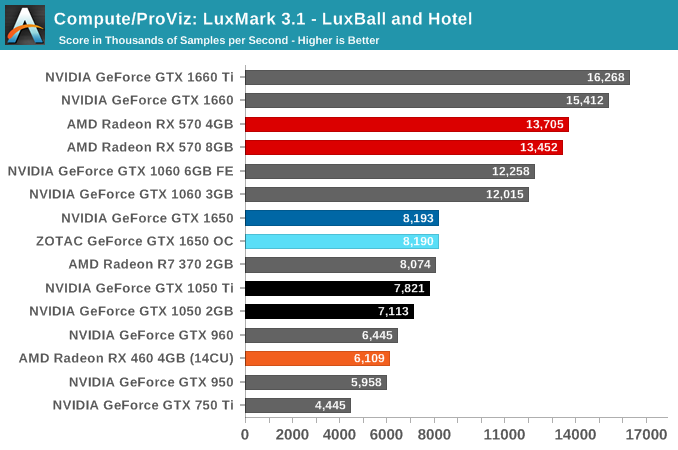
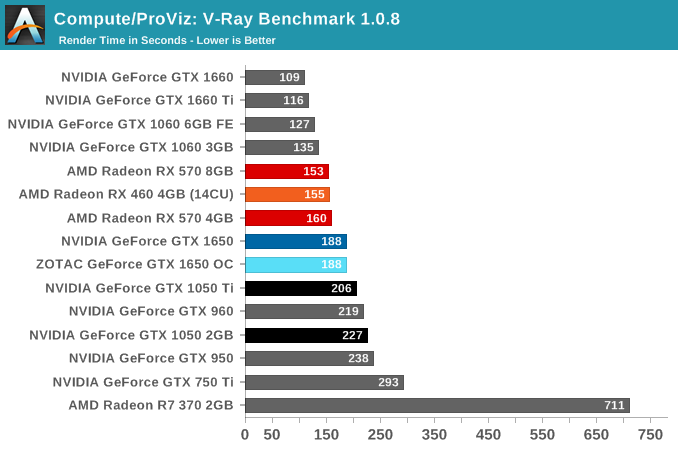
We'll also take a quick look at tessellation performance.
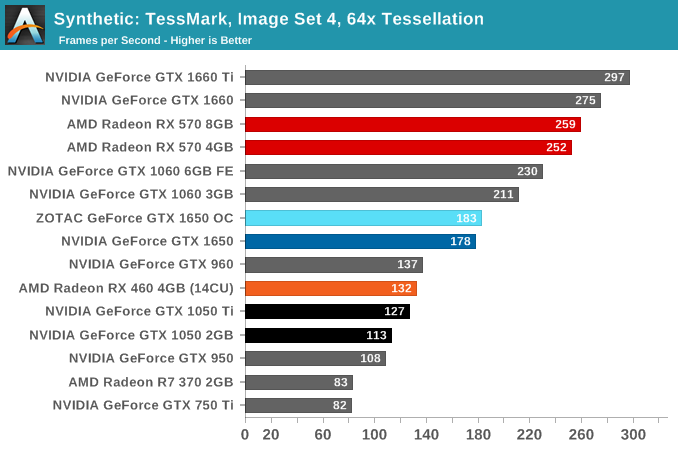
Finally, for looking at texel and pixel fillrate, we have the Beyond3D Test Suite. This test offers a slew of additional tests – many of which we use behind the scenes or in our earlier architectural analysis – but for now we’ll stick to simple pixel and texel fillrates.
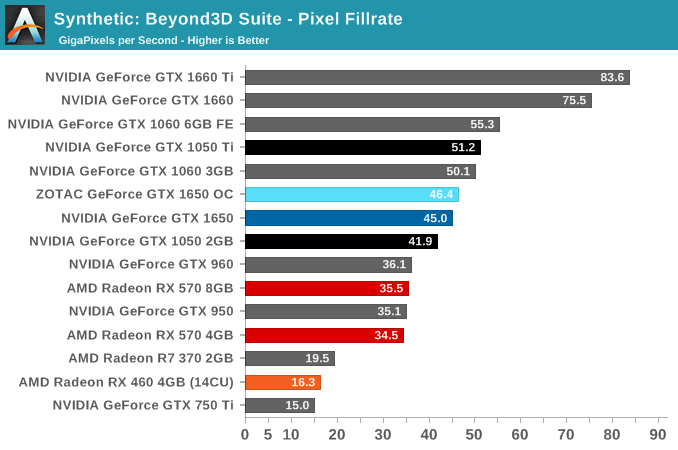

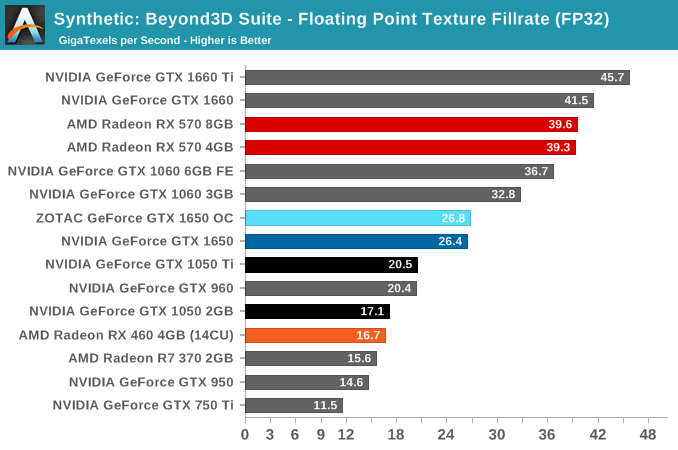










126 Comments
View All Comments
dr.denton - Saturday, May 4, 2019 - link
I honestly thought you were doing a weird "ye olde" kind of thing there. Thanks for clearing that up :DOxford Guy - Saturday, May 4, 2019 - link
"Wow. This card makes no sense."It makes perfect sense for Nvidia. The corporation's goal is to sell the lowest-quality product for the most money possible. Nvidia has, can, and does, rely on its brand mindshare to overcome deficits in its products at various price points, especially around the lower end. In other words, people buy it because it's painted green.
eva02langley - Sunday, May 5, 2019 - link
I don't believe this trend is going to keep going. Everyone is now checking reviews online before making their choice. No way this will pass like butter in a pan.cfenton - Sunday, May 5, 2019 - link
"RX570 8GB pulse, fro sapphire is cooler running, quieter, vastly higher build quality, >10% faster, twice the vram and 135W board power, which is perfectly fine even for potato OEM builds anyway."Not if the OEM build doesn't have a 6-pin PCIE cable. If you're building you own computer, then I agree that the 570 is a much better choice. However, if you want to do a quick upgrade to an older OEM system running a 750TI without a 6-pin, then the 1650 makes sense.
nunya112 - Friday, May 3, 2019 - link
Wow what a terrible product. a 570 beats it the price highlights that problem.SolarAxix - Saturday, May 4, 2019 - link
Many of my son's friends have lease-return desktop PCs their parents bought at a good price (i5/i7 2xxx to 4xxx) along with a 720p or 1080p LCD screen (usually less than a $300 investment) and many with SSDs. That being said, most of them use the iGPU (with a few of them with a lowend NVIDIA Quadro or AMD FirePro PCIe-based GPU). That being said, they want to be able to game at 720p/1080p with their friends and it usually doesn't cut it because of the iGPU or poor PCIe GPU.When it comes to upgrading the GPU, one of the drawbacks for these systems are the lack of a 6-pin PCIe connector from the power supply and lackluster power supplies in general which can't be easily upgraded. In the past, I've recommended they get a 1050 and they've been very happy with their purchase along with a quick 10 minute upgrade. I can see the 1650 being what I'd recommend to them in the future if it fits their budget.
I'm with with most of you though, where if you have a system that can handle a 570, that is a much better choice.
It would be interesting to see how big is the market for 75W GPUs based on desktop PCs which can't handle anything more than that (which has nothing to do with saving power on someone's electric bill).
Oxford Guy - Saturday, May 4, 2019 - link
If one has so little money that one has to do a significant amount of PC gaming on a machine that can't handle more than a 75W GPU perhaps it's time to reconsider spending that time on PC gaming.It seems like it would be a better idea to buy a used GPU and a cheap, but decent, PSU.
cfenton - Sunday, May 5, 2019 - link
Swapping out a GPU is relatively simple. Swapping out a power supply, especially in an OEM system with a custom power supply, is much more involved.yannigr2 - Saturday, May 4, 2019 - link
This is by far the most 1650 friendly review I have seen online. I mean, the choice of words, it's almost like someone is trying to not spoil his resume. Also it is the only review where AMD looks desperate, while it is a huge questionmark for how much time it will be willing to try to defend it's position with the RX 570 in the market. If only there where new cards coming from them in a couple of months, but I guess they don't prepare anything.Oxford Guy - Saturday, May 4, 2019 - link
Polaris is such an old architecture and it was very cheap to buy years ago, prior to the crypto surge. For it to be so competitive against the wealthiest GPU company's latest design is a sad statement about the quality of competition in the PC gaming space. Duopoly competition isn't good enough.If there were high-quality competition happening no company would be able to get away with putting overpriced turkeys into the market.